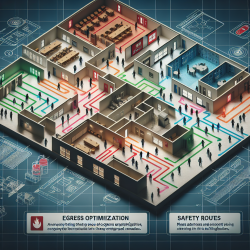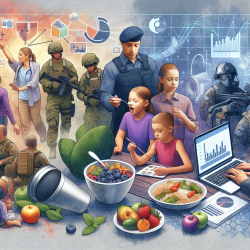Introduction
In the ever-evolving landscape of healthcare, the need for an interdisciplinary workforce is more crucial than ever. Non-communicable diseases (NCDs) pose a significant threat to global health, accounting for 74% of deaths worldwide. The World Health Organization (WHO) emphasizes the importance of integrated care models to address this growing challenge. A recent study, "Building an interdisciplinary workforce for prevention and control of non-communicable diseases: the role of e-learning," highlights the transformative potential of e-learning in bridging educational gaps and enhancing the skills of healthcare practitioners.
The Power of E-Learning
E-learning has emerged as a powerful tool for continuing professional development, offering a flexible and accessible platform for healthcare professionals to enhance their skills. The study underscores that e-learning can be as effective as traditional education methods, providing a cost-effective and scalable solution to global health education challenges.
Key advantages of e-learning include:
- Accessibility: E-learning breaks geographical barriers, providing access to education in remote and underserved areas.
- Cost-effectiveness: It optimizes existing resources, reducing the need for physical infrastructure and travel expenses.
- Customization: Courses can be tailored to individual learning needs, allowing practitioners to focus on areas most relevant to their practice.
- Global Standardization: E-learning facilitates the dissemination of standardized content, promoting consistency in healthcare education worldwide.
Challenges and Solutions
Despite its benefits, e-learning faces challenges such as technological barriers, limited digital literacy, and inadequate evaluation methods. To overcome these, the study suggests:
- Technological Support: Providing necessary equipment and technical assistance to ensure smooth access to e-learning platforms.
- Comprehensive Evaluation: Implementing robust evaluation frameworks to assess the impact of e-learning on clinical competencies and patient outcomes.
- Equity in Access: Ensuring content is available in multiple languages and addressing the digital divide to include underrepresented groups.
Implementing Interdisciplinary Education
Interdisciplinary education is pivotal in equipping healthcare workers with the skills needed to provide integrated care. The WHO identifies six competency domains essential for delivering high-quality care: people-centeredness, decision-making, communication, collaboration, evidence-informed practice, and personal conduct.
By fostering these competencies through e-learning, healthcare professionals can enhance their ability to work effectively in interdisciplinary teams, ultimately improving patient outcomes. For instance, the American Heart Association's courses on advanced life support exemplify successful interdisciplinary training, encouraging collaboration among diverse healthcare professionals.
Conclusion
As healthcare systems worldwide grapple with the burden of NCDs, the need for a skilled interdisciplinary workforce becomes increasingly apparent. E-learning offers a promising avenue to address educational gaps, fostering a culture of continuous learning and collaboration. By embracing e-learning, practitioners can enhance their skills, contribute to better patient outcomes, and drive the transformation of healthcare delivery.
To read the original research paper, please follow this link: Building an interdisciplinary workforce for prevention and control of non-communicable diseases: the role of e-learning.










